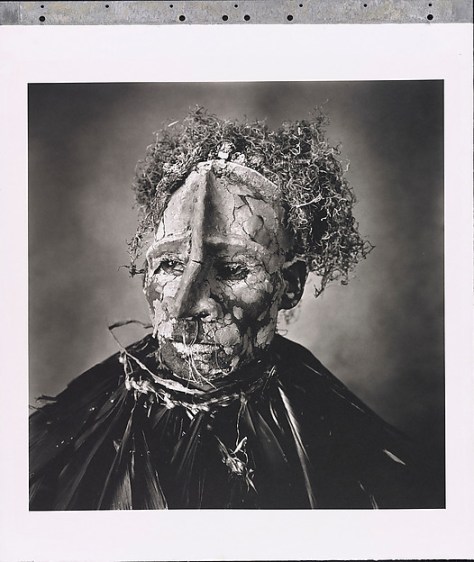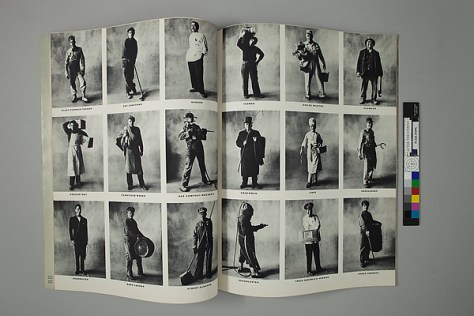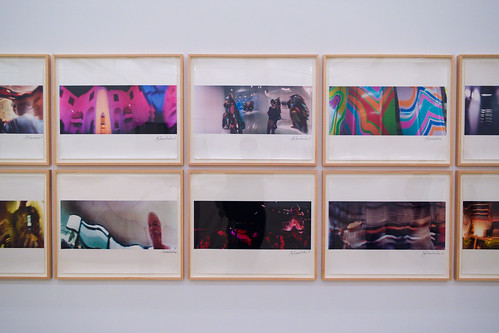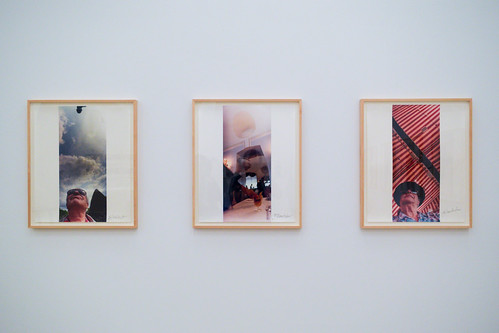Note: this previously posted on NJWV.
While National Geographic is one of main ways I grew up consuming photographs, baseball cards are a close runner up. I never considered them as photos, but in coming back to the hobby, I’m realizing how interesting the photography side of them is and how learning about their history served as a primer on photographic history. Just by looking at the way that the photos have changed over the decades we can see how differently we’ve seen the game.
Being able to recognize within the photos what kind of equipment was used allows us to think about both how the gear has changed and how the gear influences the way we see the world—and the cues we take to determine what age a photo comes from.
I’ve been thinking about this a lot because of the retro-style card trend. Both in my recent post as well as in two posts on SABR,* I’ve been grappling with what I like, and what I don’t, and why. And a lot of it comes down to photographic technology and technique more than anything else.
*Not Hooked on Heritage and an appropriately-titled response called Hooked on Heritage.
Yes, there’s a lot of printing technology and graphic design to talk about too, but when we’re looking at cards and deciding what we like, we’re talking about photos. When we’re comparing eras, we’re comparing photographic techniques. And when we’re looking at baseball card history, we’re looking at photographic history. Maybe it’s best to start from the beginning.



In the late 19th century (all three examples here are 1887) the cards were albumen prints of posed studio photos—basically cabinet cards but with baseball players. By being cabinet cards, many of them are larger (4.5×6 inches) than modern baseball cards. Some however, like the Gypsy Queen card here, are closer to carte de visite in size (1.125×3.5 to 2.5×4 inches) and thus, much closer to our concept of the modern baseball card.
These photos are typically posed in the studio—backdrop detail is all over the map—in poses which are still familiar. Little leaguers today take pictures in a batting stance and the throwing motion is a long-standing baseball card staple. Others though—such as the pretend fielding—are wonderfully dated and scream nostalgia. In all cases, the poses have to be positions which can be held for a long-enough time to take the photo. Photography needed a lot of light at the time for stopping action
I was surprised to find one card which was taken outside. It’s nice to see bleachers and get a sense of a possible ballpark but I suspect it’s staged for where the best light is. These are all photographs taken within the limitations of the view camera, its plate processing requirements, and the aforementioned shutter speeds. While such cameras could travel, that was not what they were best at and you risked things blurring when you were outside.
Reading about how people used and traded cabinet cards and cartes de visite of celebrities is eerily familiar to me as a baseball card collector. It’s not just trading personal photos between friends, these cards were souvenirs and mementos to be collected into albums and shown off.
It’s in the ability to produce prints en masse and the celebrity subject matter which distinguishes these from tintypes* and other one-off forms of photography. These early baseball cards highlight that it’s not only a matter of creation or consumption of photographs which is important. The technology for distribution and printmaking** is just as integral a part of our visual literacy.
*Baseball tintypes do exist and that’s not even getting into Tabitha Soren’s work—a book I totally need to buy.
**Which is why it’s important to distinguish between cabinet cards and cartes de visite which functioned as baseball trading cards versus those which were for personal use.



By the 1920s the poses were all outside and the printing was no longer photographic. Instead of contact printing from the camera negatives, the new cards are photos from large-format cameras* which were then re-photographed and reduced in size for lithographic printing.
*My guess is 4×5 inch sheet film.
The film is larger and more sensitive. The cameras are still cumbersome* but are more portable and capable of faster shutter speeds. As a result the poses can be more dynamic and photos can be taken in the actual stadiums. Larger negatives means that the backgrounds are pretty blurry but we can still make out some park details. There’s not enough to really figure out where the photos were taken—for the most part these appear to be in empty ballparks during special photo sessions—but they’re very clearly in a proper ballpark.
*I love this photo from 1911.
Unless the photo is a headshot, the camera is pretty far away so it can show all of the player. Where before the player and the photographer were clearly working together to get a portrait, these photos feel like the photographer is playing things kind of safe with the action and doesn’t want to waste any shots. Since the cameras only held one sheet of film at a time* photography is still a pretty slow process and I understand being extremely conservative with compositions and timing.
*Maybe two if they had backs which could be loaded on both sides.
It’s worth mentioning here that I’m not writing about the classic T206 Tobacco Cards and other releases through the 1950s which consisted of clearly-painted images derived from photographic sources. While these are important parts of baseball card history, the way that the backgrounds can be painted in means that it’s impossible to get a good sense of the photograph itself.
At the same time, it is also important to remember than almost all of the photographs have gone through a painting step to prepare them for printing. These painted-on prints* are fascinating objects in and of themselves in how they reveal a bit of photographic process—especially the cropping that occurs from the original negative—as well as how the printing itself changes the image.
*More info in the Pier 24 Secondhand post.

By the 1940s it’s clear that we’ve evolved a bit further. Instead of large-format cameras we have medium-format.* So smaller negatives, even faster film,** sharper lenses, faster shutter speeds, and the ability to get closer and interact with the subject a lot more. Roll film enables much more rapid photography and the ability to try a bunch of different things quickly results in better images. Where the 1920s photos all feel kind of distant and safe, these 1940s photos are much more intimate.
*6×6 or 6×7 so 10 or 12 shots of 2¼-inch-wide images.
**but still really slow compared to what we’re used to today.
Tight crops. Even better ability to freeze action while posing. The smaller negatives mean that we have larger depth of field available and can start to make out the details of where the photos are taken. And the fact that there are probably a dozen images to choose from for each player means that what we’re seeing are indeed better photos.
The only thing missing is color but these photos themselves represent the dominant look of baseball cards through the 1960s.

We can clearly see faces and with the color photos we can tell that baseball is a game to be played during the day when the sun is high, the skies are blue, and the light can shine across the subjects for a nice even exposure. There’s not a lot of latitude with slide film but even with professional gear these photos mimic a lot of the advice I’ve seen in photography guides from that time period.
This is an era where every house had a Brownie Hawkeye Flash and slow medium format film was the standard. Backgrounds are busy but still blurred and the main variation in the cards is whether they’re a tightly-cropped headshot or an above-the-waist pose.
Adding to the view and focal depth of these photos is the actual camera placement. Most of the cards feel like they were shot with a waist-level viewfinder. The camera is both pretty low and the players rarely look directly into the lens. This allows for Topps to do a lot of fudging with players who get traded as the hat logos aren’t visible. But it’s also a viewpoint which comes naturally to this kind of camera. As eye-level and through-the-lens gain acceptance, the camera’s point of view creeps higher and players begin to make more and more eye contact with the lens.


By the 1970s it feels like 35mm has taken over.* In addition to the higher point of view, we have casual shots now which suggest that photographers are a lot more mobile and using photojournalist-style techniques which 35mm is especially well-suited for. We’re also seeing more wide-angle lenses and can really make out a lot of detail in the stadiums. And we’re seeing more obvious uses of photographic flash.
*You can see some of this in the late 1960s but the player boycott marks a pretty clear dividing line in photographic approach which just happens to coincide with the rise to dominance of 35mm cameras.
It’s not just the cameras which have gotten extremely mobile, the flashes have too, and a smaller film format* is more conducive to taking risks and not getting screwed by having to reload so often. There’s often less interaction with the players again as photographers have the ability to work very quickly and get in and out with pictures. But the posed portrait sessions still exist and, with the additional depth of field available** these photos often give us ballpark detail we hadn’t seen previously.
*36 exposures per roll instead of 10 or 12.
**For a given field of view and lens aperture, the smaller the image sensor the larger the depth of field.


35mm film also meant that action photography was all of a sudden a legitimate possibility. In the early 1970s, these photos were pretty bad. Telephoto lenses at this time were pretty short, pretty slow, and not very sharp.* Autofocus didn’t exist yet so photographers had to be on the top of their game in order to get anything in focus. Plus Topps still required 100 speed film for quality reasons** so you were constantly pushing the limits of your equipment.
*We’re talking about when a 200mm f/4 was standard.
**As per Doug McWilliams.
It’s no wonder that the action cards feel like novelties here. The fact that the exist at all is in many ways more important than the quality of the photograph. Plus, after decades of posed shots, it must’ve felt exciting to see photos of in-game action. There are some gems—I love the 1973 Marichal card—but most of the time we have a generic moment without any emotion and the horrible lighting which comes from trying to get a decent photo of someone wearing a baseball cap in the middle of the day.

By the early 1980s lens technology and quality had improved to the point where the action shots became more common and no longer felt like novelties. We’re also getting decent zoom and catadioptric lenses* which allow even more options for photographers with both reach and flexibility.
*A lot of the 1980 cards like the Jack Clark above show the characteristic ringed highlights in the background
As a result, in this time period we have a really good mix of posed vs action vs casual photos. No one variant truly dominates.

What did change in the 1980s though is the portrait lighting. Instead of the Topps standard of “photograph the player facing the sun with a shadow of the across their face”* we start to see a lot more reliance on flash to create separation between the subject and the background. This gets increasingly obvious in the mid-1980s when many of the photos have backgrounds which have been underexposed by a stop or two.
*Doug McWilliams again.
Even if taken on a bright sunny day, these photos are a lot more moody and stand our as a distinct 1980s look.

In the 1980s and 1990s autofocus lenses became commonplace and film emulsions continue to get faster. Couple that with motor drives and we’re able to get much more reliably good action photos. Lots of film wasted but they blow the 1970s photos out of the water.
It’s not a surprise that companies like Score which had only action shots emerged in the late 1980s. Such a set was impossible even five years earlier but there was finally enough good action photography available.
We’re still not particularly close to the plays though. I suspect that 500mm lenses were still the longest reach anyone had. But that’s good enough for anything in the infield.

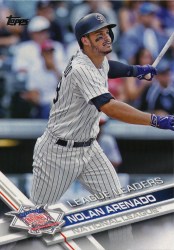
It took another format change to get us to where we are today. Digital cameras, longer lenses, faster lenses, and smaller sensors have allowed us to get closer than we ever have before. It also means that we‘re able to get “portraits” and casual images from further and further away. These images are both distinct in the tightness of the crops and in how blurred the background is.
We didn’t have the technology to do this before and the super-blurred background is a pretty clear tell—along with super-punchy color both from better printing, being able to shoot in flatter light, and digital imaging tricks—of photographic trends in the past decade. Most baseball games are at night now and cameras are good enough to be able to focus on and freeze action in artificial light now.
One of the reasons why a lot of the Heritage card designs feel weird is that they appear to be shot with the same equipment as the action cards. Digital SLRS. Super-long lenses or professional zoom lenses. We know intuitively what kind of photo to expect from those card designs and when that doesn’t match up our brains kind of freak out.
I’d love to see modern cards shot with medium format film and waist-level viewfinders just to see how that changes things. Or large-format film and view cameras. Or in the studio with props, silly poses, and long exposure times. We’ve a long history of baseball photography and, while computers are wonderful things, there’s still no replicating the way that different equipment allows us to see things differently. For a game which is so steeped in history like baseball it’s important to remember all the aspects of that history and how much of that history is tied to its visual record.













